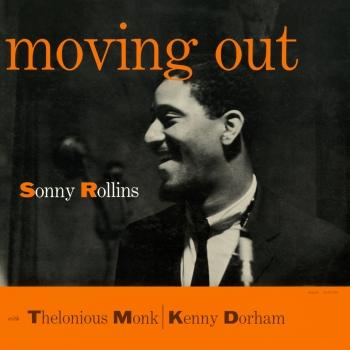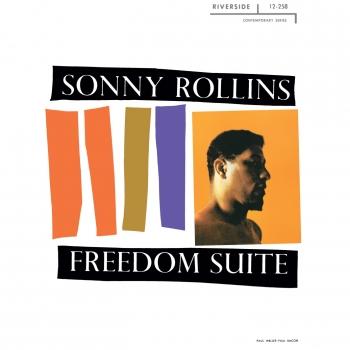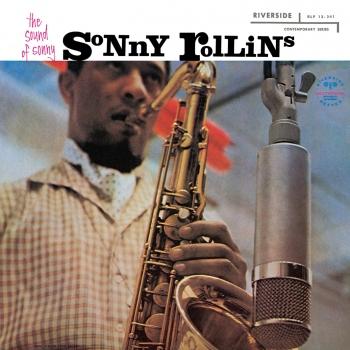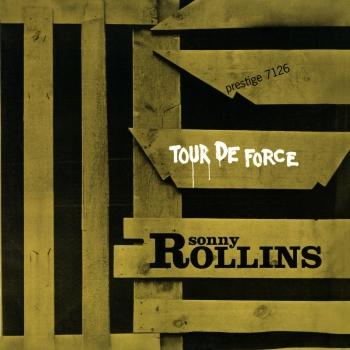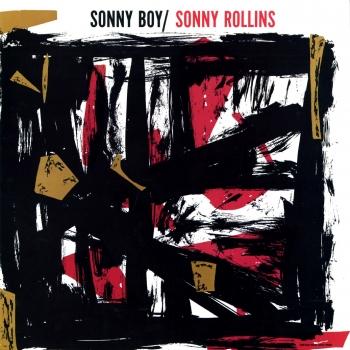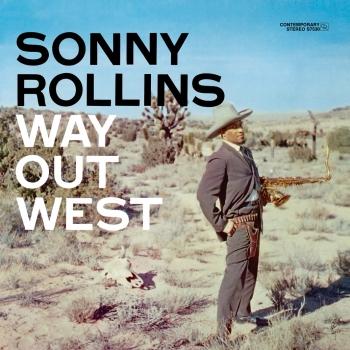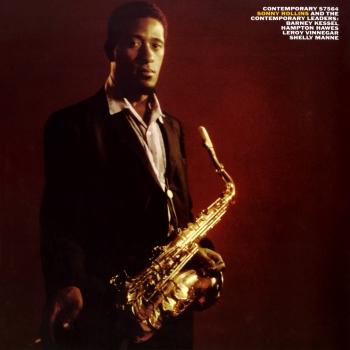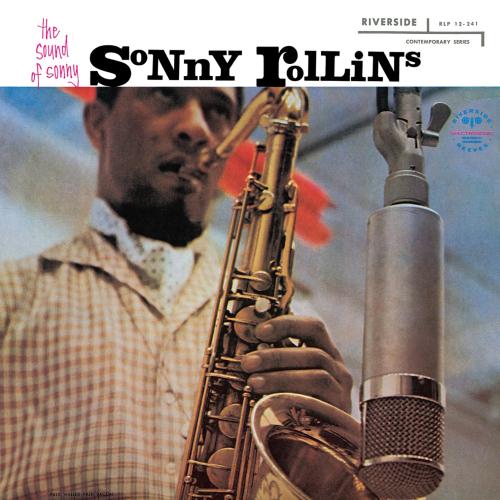
The Sound Of Sonny (Remastered) Sonny Rollins
Album Info
Album Veröffentlichung:
1957
HRA-Veröffentlichung:
20.01.2017
Das Album enthält Albumcover Booklet (PDF)
Entschuldigen Sie bitte!
Sehr geehrter HIGHRESAUDIO Besucher,
leider kann das Album zurzeit aufgrund von Länder- und Lizenzbeschränkungen nicht gekauft werden oder uns liegt der offizielle Veröffentlichungstermin für Ihr Land noch nicht vor. Wir aktualisieren unsere Veröffentlichungstermine ein- bis zweimal die Woche. Bitte schauen Sie ab und zu mal wieder rein.
Wir empfehlen Ihnen das Album auf Ihre Merkliste zu setzen.
Wir bedanken uns für Ihr Verständnis und Ihre Geduld.
Ihr, HIGHRESAUDIO
- 1 The Last Time I Saw Paris 02:58
- 2 Just In Time 04:00
- 3 Toot, Toot, Tootsie 04:24
- 4 What Is There To Say 04:56
- 5 Dearly Beloved 03:07
- 6 Ev'ry Time We Say Goodbye 03:22
- 7 Cutie 05:55
- 8 It Could Happen To You 03:47
- 9 Mangoes 05:32
Info zu The Sound Of Sonny (Remastered)
„The Sound Of Sonny“ shows everything that makes Sonny Rollins one of the titans of the tenor saxophone. Sound of Sonny songs He has a tone which can evoke heart-rending passions with a smoothness just this side of Ben Webster. Add to that the man's warm and playful sense of humor, and you've got a sax that's every bit a full and well-rounded emotional being. Without ever cheapening humor into novelty, it's a staple of his persona. This time out he finds the wacky joy in playing "Toot, Toot, Tootsie" as if it's some kind of after hours national anthem (this is, after all the same man who recorded "I'm An Old Cowhand" on his „Way Out West“ album). The session boasts a superlative rhythm section of Sonny Clark on piano, Paul Chambers or Percy Heath on bass, and Roy Haynes on drums--all stellar players of the post-bop era.
„A new phase in Sonny Rollins' career began in 1957. He started what was at the time an almost blasphemous trend of recording for a number of different labels. His pioneering spirit yielded a few genre-defining albums, including this disc. His performances were also at a peak during 1957 as Down Beat magazine proclaimed him the Critics' Poll winner under the category of "New Star" of the tenor saxophone. This newfound freedom can be heard throughout the innovations on The Sound of Sonny. Not only are Rollins' fluid solos reaching newly obtained zeniths of melodic brilliance, but he has also begun experimenting with alterations in the personnel from tune to tune. Most evident on this platter is "The Last Time I Saw Paris" -- which is piano-less -- and most stunning of all is Rollins' unaccompanied tenor solo performance on "It Could Happen to You." Indeed, this rendering of the Jimmy Van Heusen standard is the highlight of the disc. That isn't to say that the interaction between Sonny Clark (piano), Roy Haynes (drums), and bassists Percy Heath and Paul Chambers -- who is featured on "The Last Time I Saw Paris" and "What Is There to Say" -- is not top-shelf. Arguably, it is Rollins and Heath -- the latter, incidentally, makes his East Coast debut on this album -- who set the ambience for The Sound of Sonny. There is an instinctually pervasive nature as they weave into and back out of each others' melody lines, only to emerge with a solo that liberates the structure of the mostly pop standards. This is a key component in understanding the multiplicities beginning to surface in Rollins' highly underappreciated smooth bop style.“ (A new phase in Sonny Rollins' career began in 1957. He started what was at the time an almost blasphemous trend of recording for a number of different labels. His pioneering spirit yielded a few genre-defining albums, including this disc. His performances were also at a peak during 1957 as Down Beat magazine proclaimed him the Critics' Poll winner under the category of "New Star" of the tenor saxophone. This newfound freedom can be heard throughout the innovations on The Sound of Sonny. Not only are Rollins' fluid solos reaching newly obtained zeniths of melodic brilliance, but he has also begun experimenting with alterations in the personnel from tune to tune. Most evident on this platter is "The Last Time I Saw Paris" -- which is piano-less -- and most stunning of all is Rollins' unaccompanied tenor solo performance on "It Could Happen to You." Indeed, this rendering of the Jimmy Van Heusen standard is the highlight of the disc. That isn't to say that the interaction between Sonny Clark (piano), Roy Haynes (drums), and bassists Percy Heath and Paul Chambers -- who is featured on "The Last Time I Saw Paris" and "What Is There to Say" -- is not top-shelf. Arguably, it is Rollins and Heath -- the latter, incidentally, makes his East Coast debut on this album -- who set the ambience for The Sound of Sonny. There is an instinctually pervasive nature as they weave into and back out of each others' melody lines, only to emerge with a solo that liberates the structure of the mostly pop standards. This is a key component in understanding the multiplicities beginning to surface in Rollins' highly underappreciated smooth bop style. (Lindsay Planer, AMG)
Sonny Rollins, tenor saxophone
Sonny Clark, piano (on tracks 2-7 & 9)
Percy Heath, bass (on tracks 2-3, 5-7 & 9)
Paul Chambers, bass (on tracks 1, 4 & 10)
Roy Haynes, drums (on tracks 1-7 & 9-10)
Recorded June 11, 12 and 19, 1957, New York, New York
Produced by Orrin Keepnews
Digitally remastered
Please Note: We offer this album in its native sampling rate of 44.1 kHz, 24-bit. The provided 192 kHz version was up-sampled and offers no audible value!
Sonny Rollins
will go down in history as not only the single most enduring tenor saxophonist of the bebop and hard bop era, but also the greatest contemporary jazz saxophonist of them all. His fluid and harmonically innovative ideas, effortless manner, and easily identifiable and accessible sound have influenced generations of performers, but have also fueled the notion that mainstream jazz music can be widely enjoyed, recognized, and proliferated. Born Theodore Walter Rollins in New York City on September 7, 1930, he had an older brother who played violin. At age nine he took up piano lessons but discontinued them, took up the alto saxophone in high school, and switched to tenor after high school, doing local engagements. In 1948 he recorded with vocalist Babs Gonzales, then Bud Powell and Fats Navarro, and his first composition, "Audubon," was recorded by J.J. Johnson. Soon thereafter, Rollins made the rounds quickly with groups led by Art Blakey, Tadd Dameron, Chicago drummer Ike Day, and Miles Davis in 1951, followed by his own recordings with Kenny Drew, Kenny Dorham, and Thelonious Monk.
In 1956 Rollins made his biggest move, joining the famous ensemble of Max Roach and Clifford Brown, then formed his own legendary pianoless trio with bassist Wilbur Ware or Donald Bailey and drummer Elvin Jones or Pete La Roca in 1957, doing recorded sessions at the Village Vanguard. Awards came from Down Beat and Playboy magazines, and recordings were done mainly for the Prestige and Riverside labels, but also for Verve, Blue Note, Columbia, and Contemporary Records, all coinciding with the steadily rising star of Rollins. Pivotal albums such as Tenor Madness (with John Coltrane), Saxophone Colossus (with longstanding partner Tommy Flanagan), and Way Out West (with Ray Brown and Shelly Manne), and collaborations with the Modern Jazz Quartet, Clark Terry, and Sonny Clark firmly established Rollins as a bona fide superstar. He also acquired the nickname "Newk" for his facial resemblance to Brooklyn/Los Angeles Dodgers pitcher Don Newcombe.
But between 1959 and 1961 he sought a less superficial, more spiritual path to the rat race society of the times, visiting Japan and India, studying yoga and Zen. He left the music business until 1962, when he returned with the groundbreaking and in many ways revolutionary recording The Bridge with guitarist Jim Hall for the RCA Victor/Bluebird label. Rollins struck up a working relationship with trumpeter Don Cherry; did a handful of innovative LPs for the RCA Victor, MGM/Metro Jazz, and Impulse! labels; did one record with his hero Coleman Hawkins; and left the scene again in 1968. By 1971 he came back with a renewed sense of vigor and pride, and put out a string of successful records for the Milestone label that bridged the gap between the contemporary and fusion jazz of the time, the most memorable being his live date from the 1974 Montreux Jazz Festival, The Cutting Edge. Merging jazz with calypso, light funk, and post-bop, the career of Rollins not only was revived, but thrived from then onward. He was a member of the touring Milestone Jazz Stars in 1978 with McCoy Tyner and Ron Carter, and gained momentum as a touring headliner and festival showstopper.
His finest Milestone recordings of the second half of his career include Easy Living, Don't Stop the Carnival, G-Man, Old Flames, Plus Three, Global Warming, This Is What I Do, and Without a Song: The 9/11 Concert. He has worked extensively with road and recording bands that have included such artists as electric bass guitarist Bob Cranshaw; trombonist Clifton Anderson; pianists Tommy Flanagan and Stephen Scott; keyboardist Mark Soskin; guitarists Bobby Broom and Jerome Harris; percussionist Kimati Dinizulu; and drummers Jack DeJohnette, Perry Wilson, Steve Jordan, and Al Foster. Rollins formed his own record label, Doxy, through which he issued the CD Sonny, Please in 2006. Well into his eighth decade of life, Rollins continued to perform worldwide. As a composer, he will always be known for three memorable melodies that have become standards and well-recognized tunes in the jazz canon -- "Oleo," "Airegin," and especially "St. Thomas." (Michael G. Nastos). Source: Blue Note Records.
Booklet für The Sound Of Sonny (Remastered)

















